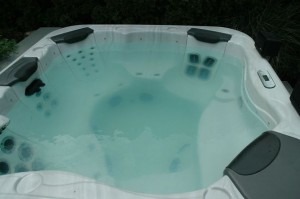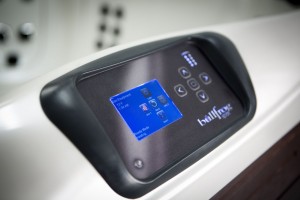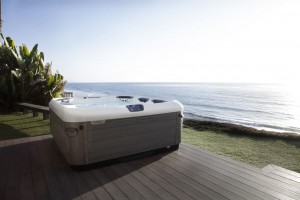
Recently, our Best Hot Tubs blog focused on how easy it is to maintain your hot tub. But we know that many of you also like to immerse yourselves in the details.
With that in mind, we are pleased to share our page today with guest blogger Danielle Adams — a freelance writer with expertise in the hot tub experience. She has all the nitty gritty on hot tub maintenance.
Enjoy!
By Danielle Adams
 Hot Tub Chemistry 101
Hot Tub Chemistry 101
When it comes to your hot tub, proper water maintenance is absolutely essential. An imbalance in the water in your hot tub can result in damage to the equipment and the overall structure of the hot tub. Here, we have compiled a quick reference to help you keep your hot tub water properly balanced and safe for use, which in turn will extend the life of this relaxing backyard feature.
 Balancing Alkaline Levels
Balancing Alkaline Levels
When caring for your hot tub, it’s important to check the alkaline levels in the water first, as these levels will ultimately have an effect on the pH levels. To test the alkaline levels, carefully remove a test strip from the container and dip it into the hot tub water. Test strips are coded to register a color based on the level of alkalinity in the water; matching up the color on the strip to the color chart on the container will allow you to determine whether you need to add an alkaline increaser, or contact a hot tub supply store for further help.
Balancing pH Levels
Once alkaline levels are balanced, the next step is checking the pH levels. To test the pH levels, you’ll use the same test strip you used to test alkalinity. Low pH levels mean the water is too acidic, which in turn can lead to equipment damage and eye irritation, while high pH levels are a sign of too much alkaline in the water, which can cause sanitizers to be ineffective, as well as skin irritation.
 Sanitizers
Sanitizers
Chlorine and bromine are the sanitizers most commonly used in hot tub water. Testing the sanitizer in your hot tub is simple, and can be completed with the use of the same test strip you used to test alkaline and pH levels. When sanitizer levels are too low, bacteria and viruses may be present in the water and can easily make swimmers sick, while levels that are too high can result in skin irritation and bleached swimwear.
Shock Treatments
It’s important to use a non-chlorine shock treatment in your hot tub water each week to keep water clean, clear, and easy to balance. To ensure the best results, follow the directions on your shock treatment to make sure you use the proper amount for your hot tub, and handle chemicals with care as they are strong and incredibly dangerous.
Saltwater Systems
Saltwater systems have become a popular alternative to chlorine and bromine sanitizers, however, saltwater may not be the best option for use in your hot tub. While saltwater systems are just as effective in sanitizing hot tub water while leaving skin softer, the salt has been known to cause damage to the metal components in hot tubs. If you want to use a saltwater system in your pool, you’ll need to install it aftermarket, which, for most hot tub brands, renders the hot tub warranty null and void.
About the Author: Danielle Adams is a freelance writer who works with Bullfrog Spas. When she’s not writing, Danielle is learning more about hydrotherapy and the healing aspects associated with hot tubs.



